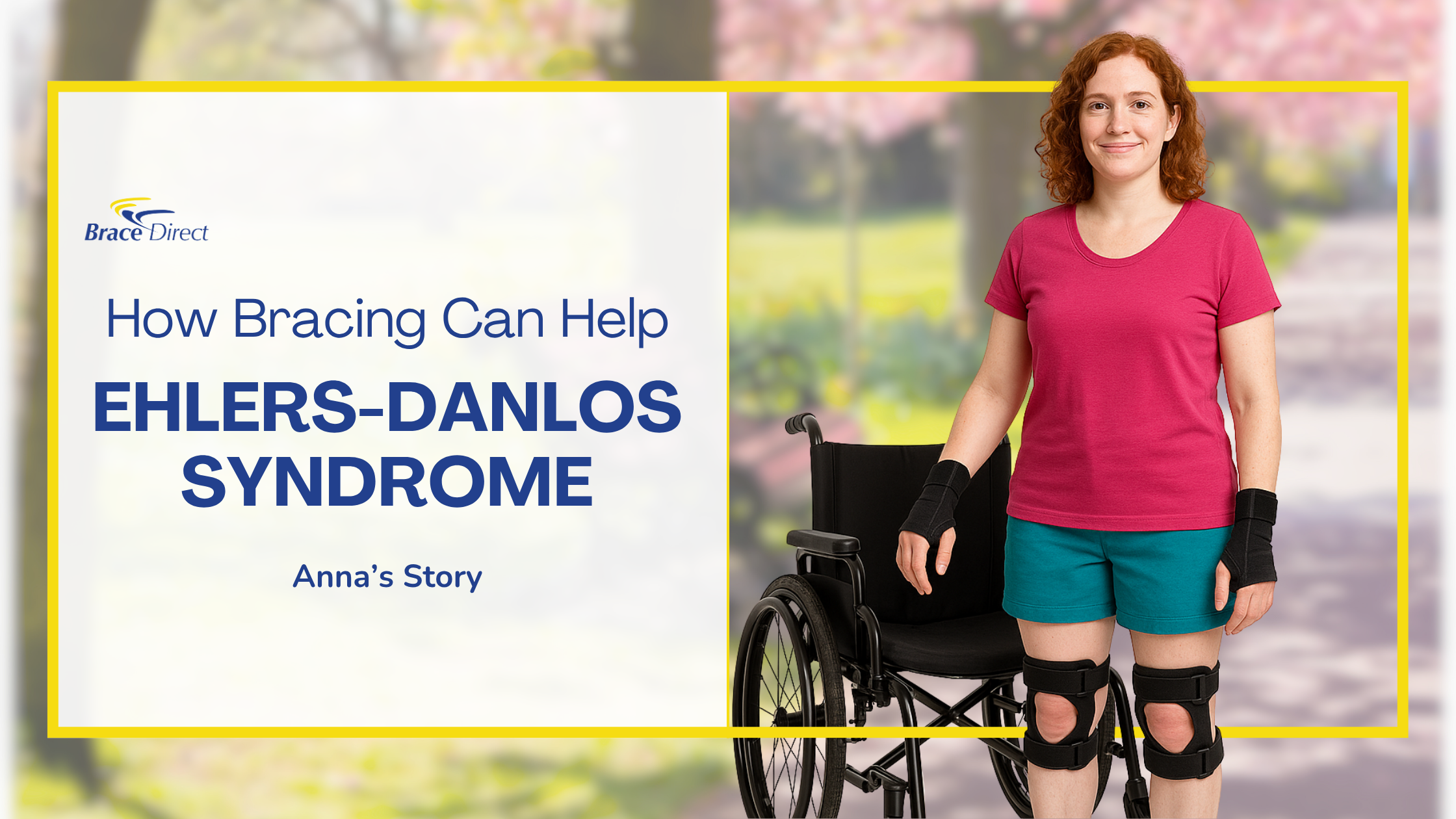M–Th 9a–11p | Fri 9a–5p
Sun 3p–11p EST
M–Th 9a–11p | Fri 9a–5p
Sun 3p–11p EST

Hypermobile Ehlers-Danlos syndrome (hEDS) causes joints to move beyond their normal range, leading to pain, fatigue, and frequent subluxations. Targeted bracing can restore stability, reduce nerve irritation, and help you stay active—without sacrificing comfort.
In this post, we share one mom's journey with hEDS and highlight three essential braces that have transformed her daily life. For comprehensive information on bracing with EDS, check out our detailed EDS Bracing Resource Guide.

Meet Anna, a busy mom of two who's navigated life with hypermobile Ehlers-Danlos Syndrome for over a decade. Before discovering targeted bracing, everyday activities—bending to pick up toys, lifting laundry baskets, or pushing open heavy doors—left her in pain and on the sidelines.
Anna contacted us to find the best braces for her hypermobility issues, and we hooked her up with targeted supports that have made all the difference. The knee braces we recommended prevent her dangerous hyperextension episodes, while the wrist braces provide crucial stability for daily tasks without restricting her movement.
"My knees would over-extend so far back I felt like they might buckle," Anna recalls. "Once I started wearing the knee braces you recommended, I could walk steadily without fear of hyperextension. And the wrist braces have been a game-changer for chores and playing with my kids—they keep my wrists stable when I'm folding laundry, rinsing dishes, or lifting my little ones."
"I still spend part of my day in a wheelchair to conserve energy," she says, "but with these braces, I can stand up to help with homework, chase after my kids, or cook dinner without worrying about sudden pain or injury."
Anna's takeaway: The right braces aren't just supports—they're freedom to live fully with EDS.
Below are our top picks to stabilize over-extending knees and protect wrists during daily chores—designed specifically for hypermobile Ehlers-Danlos Syndrome.

Dual-hinged support stops dangerous hyperextension while still allowing full flexion—ideal for hypermobile knees.
Shop Now
Rigid dorsal splint holds your wrist perfectly neutral to relieve tendon and nerve strain—great for daily tasks and typing.
Shop NowDon't let hypermobility hold you back. Our EDS-focused braces deliver the stability, pain relief, and confidence you need. Explore our full collection or take advantage of our Perfect Fit Promise for expert guidance.
Shop All EDS BracesBraces gently hold hypermobile joints in a safe position, preventing them from bending too far. This reduces pain, lowers the risk of subluxations (partial dislocations), and lets muscles rest instead of working overtime to stabilize your joints.
Look for braces with adjustable support (hinged knee braces, cock-up wrist splints) and breathable, low-profile materials. These let you limit harmful motion while still moving comfortably through daily activities.
Wear bracing during activities that stress your joints—like typing, lifting, walking, or sports. You may also benefit from a night splint (e.g., a dorsal plantar fasciitis splint) to keep tendons and ligaments gently stretched while you sleep.
No—braces are one tool in your toolkit. They work best alongside a tailored physical therapy program that builds strength and proprioception (joint-position awareness). Together, they help you move confidently and protect fragile connective tissue.
If you have very loose joints, frequent dislocations, or unique anatomy, a custom orthosis (like a custom AFO or TLSO) can provide precise support. Talk to your doctor or orthotist; they can prescribe a PDAC-coded device that fits your body and lifestyle.